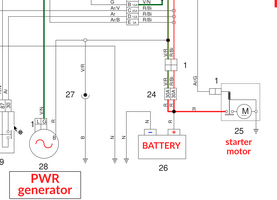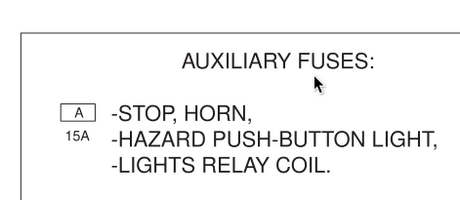pswiatki
Tuned and Synch'ed
I am redoing 2008 Breva 1200 wiring diagram (cable colours, part description strings, multi-layer, etc.) in SVG format. Not that I have too much free time, but I want to know exactly what happened to my bike when it burned wires near the headlight and the ignition lock.
If my understanding of what I see is correct it seems that (unless the generator has some internal fuse or another type of overcurrent protection) there is no current limits other than the generator's ability to serve it. The only fuse I can see is at the battery terminal (30A), but that can only protect the battery from excessive charging current when the engine is running, or from draining when the engine is stopped. Is this correct?
If so, it would nicely explain burnt wires here and there (they gave up faster than the 550W generator's coils).
By the way: anyone knows of any other attempts at improving the original version of the Breva wiring diagram?
I'd rather avoid duplicating effort if it has already been done.
If my understanding of what I see is correct it seems that (unless the generator has some internal fuse or another type of overcurrent protection) there is no current limits other than the generator's ability to serve it. The only fuse I can see is at the battery terminal (30A), but that can only protect the battery from excessive charging current when the engine is running, or from draining when the engine is stopped. Is this correct?
If so, it would nicely explain burnt wires here and there (they gave up faster than the 550W generator's coils).
By the way: anyone knows of any other attempts at improving the original version of the Breva wiring diagram?
I'd rather avoid duplicating effort if it has already been done.



